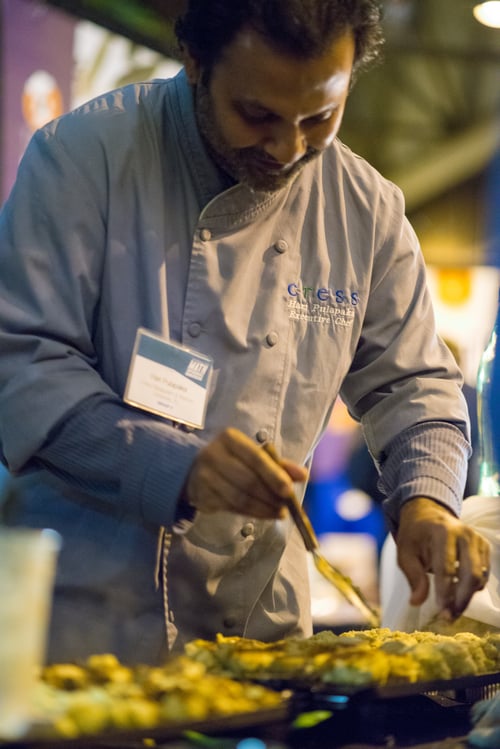What does math taste like?
I was fortunate enough to work alongside Chef Hari Pulapaka during a taste of math event at MIND Research Institute's Deeper Learning Symposium. He walked me through the different ways that flavors balance each other out. He shared how using a hint of honey would offset some of the tanginess from the citruses. He even demonstrated how science came into the equation when determining the right temperature and time to dissolve condensed coconut milk without heating it up for a cold dish.
Hari Pulapaka is the Executive Chef and Co-Owner of the highly acclaimed Cress Restaurant in DeLand, Florida. Hari is also a full-time tenured Associate Professor of Mathematics and Computer Science at Stetson University.
Hari Pulapaka lives a full life driven by two full-time passions and professions. As a chef, Hari received a classical culinary degree in 2005 from Le Cordon Bleu College of Culinary Arts in Orlando, has trained at Canoe in Toronto and opened Cress in 2008 with his wife Dr. Jenneffer Pulapaka, who is a podiatric surgeon with her own private practice: The DeLand Foot and Leg Center. As a certified Somolier, Jenneffer is also the Cress Wine Director and General Manager. Together, they shared their knowledge and passion throughout the Deeper Learning Symposium, giving educators and administrators a new perspective (and taste!) of math.
During the presentation, Hari Pulapaka, shared a few fun theorems that can help us decipher the connections between food and math.
Differentiating unique flavors is inverse to integrating additional ingredients. The more stuff you have the less of each you are going to taste. You try to find balance, but also be distinctive.
Every dish is a product of ingredients and steps, including repetitions. The final flavor is unique up to the order of steps and proportions of ingredients.
Consider the problem of optimizing the flavour of food subject to the constraints of varying, but bounded palates. An optimal solution is the result of adding an extreme ingredient or lies along a balanced approach with optimal ingredients and techniques.
For any pantry of ingredients, the number of dishes possible is always greater than the number of ingredients in the pantry.
According to Hari, mathematics is beautiful when it: "is naturally precise, efficient to some degree, makes a non-trivial connection, is emotional at some level and has a sense of connection with concepts and rote ideas."

Chef Hari Pulapaka sharing a mathematized dish at the Taste of Math.
Hungry for more? Check out Hari's famous ceviche recipe at the James Beard Foundation.
See all the resources from the Deeper Learning Symposium.

Maria Cervantes is the Community Partnerships Director at MIND Research Institute. Find her on Twitter @magucervantes1.
Comment